Going off the Grid
For Mary and Brad Kruger, living lightly doesn’t mean sacrificing comfort for conscience.
This past winter, Mary and Brad Kruger paid $21 for electricity – and their total energy bill amounted to less than $200. The average yearly energy cost of running an Ontario home is $2,358, so you might be forgiven for thinking the Krugers must lead lives of privation, huddling in the cold and reading by candlelight.
Not so. The Krugers’ 2,100-square-foot house in East Garafraxa isn’t a monument to stoic privation. It’s a shining example of how people can live comfortably on a small fraction of the energy used to heat and power a typical house. Brad isn’t an engineer or architect, but he has created a house that seamlessly combines innovative, energy-efficient design with the resourceful use of alternative energy sources.
Brad’s off-the-grid trajectory began 40 years ago after he finished high school and left home. He eventually earned a pilot’s licence and worked as an aerial surveyor in the United States, conducting forest inventories and mineral explorations.
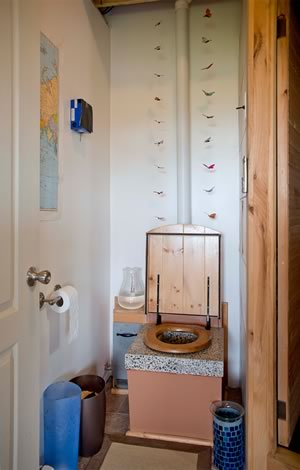
“We thought we’d have a huge uphill battle trying to explain our toilet to the building inspectors, but we were pleasantly surprised.” Photo by Pete Paterson.
The company paid for his accommodation during the eight to 10 months a year he was working. During the off-season, Brad, a disciple of David Chilton of Wealthy Barber fame, sought ways to save money. He opted for a nomadic lifestyle, wandering Mexico and the southern U.S. during the winter. Living out of his car and later a van, he slept under the stars at campgrounds and along roadsides. This was off-grid living, but in the rough.
A formative step in his budding awareness of alternative energy was the installation of solar panels on top of his van to power an auxiliary battery, giving him light to read by and electricity to run a little fridge.
And then in 1995, Brad met Mary. A young professional who worked in downtown Toronto, Mary was given to wearing high heels and fancy business garb. Yet to the horror of her parents, she moved into Brad’s van, reducing her worldly possessions to the contents of a single dresser drawer. It must have been true love.
Mary was soon working for the same flight survey company as Brad and learned to operate the camera in the belly of the plane. She also adapted to Brad’s minimalist lifestyle. “We lived with nature,” she says. “Brad showed me that observing the natural world, just outside the van door, was better than watching TV.”
The couple settled into an annual routine. They’d work from January to May, summer in Canada, then travel in the American southwest in November and December.
While they worked the Krugers stayed in hotels. Early on they lived in the van for the rest of the year, but soon began to long for a place to call home when they weren’t working or wandering. And so in 1996 they purchased 95 acres in East Garafraxa.
They parked a school bus on the property, and it became their summer home for nearly 14 years. It was while they were living in the bus that Brad and Mary’s dream of building an off-grid home took shape.
In contrast to the van, the bus was luxurious. “It was a palace. I thought I’d died and gone to heaven!” says Mary. “We had a 10-foot counter, a TV, running water from a tank on the roof, a little pot-bellied stove and a proper outdoor toilet.” The installation of a captain’s bed provided welcome storage space. Living in the bus gave impetus to Brad’s creativity. “We upgraded from Canadian Tire shower bags to a shower that Brad fashioned out of a pesticide sprayer,” says Mary, quickly adding it was a new sprayer, never used for its intended purpose.
They even had a landline hooked up, though not without incident. A groundhog nibbling the wire triggered a 911 call, summoning police in the wee hours one night. Bleary-eyed, with toques pulled down tight over their ears (it was a cold night), the Krugers leaped out of bed. The bemused officers left with a good story, and the Krugers became known as “the bus people.”
Still, as the years passed, Mary began to yearn for a real house. Brad responded by building a shop on the property and tinkering with off-grid concepts.
He doodled, experimented and read copies of Home Power Magazine, a publication dedicated to promoting the use of renewable energy. He was also guided by Canadian Wood-Frame House Construction, a Canada Mortgage and Housing Corporation publication that provides practical information for home builders.
In 2008 the foundation went in, and Brad and Mary’s great off-grid project was launched.
However, because work still took them to the U.S. every winter and because they were building the house on their own, with a little help from family and friends, construction took more than seven years. During that time they hired only two outside contractors – one to put up drywall and another to install the metal roof.
Though the house wasn’t fully livable until 2016, the Krugers’ patience, ingenuity and gumption paid off. They had realized their dream of building a functional off-grid home.
For Brad, insulation is “the absolute key” to making the home more energy efficient. The home’s insulation – R60 for the ceiling, R40 for the walls and R30 for the floor – exceeds Ontario Building Code standards.
Also critical is the orientation of the house. Expansive windows on one side face solar south, which Brad explains is where “the sun sets at the same angle as the sun rises.” Sun floods into the kitchen and living room all day, and this past winter that passive heating resulted in 20 days of free warmth – with no need to fire up the woodstove. Even when that woodstove is in use, fed by logs harvested from their property and neighbours, it doesn’t work nearly as hard as a woodstove in a conventional home. Assisted by passive heating, theirs consumed only 2.3 bush cords last winter.
The coldest days are often best for passive heating, because on those days the sun usually shines. “It isn’t intuitive, but the colder it is out there, the less energy the house uses,” says Brad.
When I visited the Krugers in March, the outdoor temperature was only 6°C at 4 p.m. Inside it was 25°C, and the woodstove hadn’t been replenished since 7:30 that morning.
Crucial components of the Krugers’ passive energy strategy are shutters Brad designed, built and hung. Filled with insulation, the shutters are the gatekeepers of the passive energy flow between the exterior and interior of the house. On cool days they are manually raised in the morning to allow the sun to stream in. Then, as the sun begins to set, Brad drops them one by one to trap captured heat.
On sunny summer days, when the challenge is to keep heat out, the shutters remain closed. Mary acknowledges the obvious drawback – sealing off the view of the outdoors. But she emphasizes that on those days she and Brad spend much of their time outside anyway, gardening or simply relaxing. The closed shutters do such an impressive job of keeping the interior cool that visitors sometimes put on sweaters and slippers.
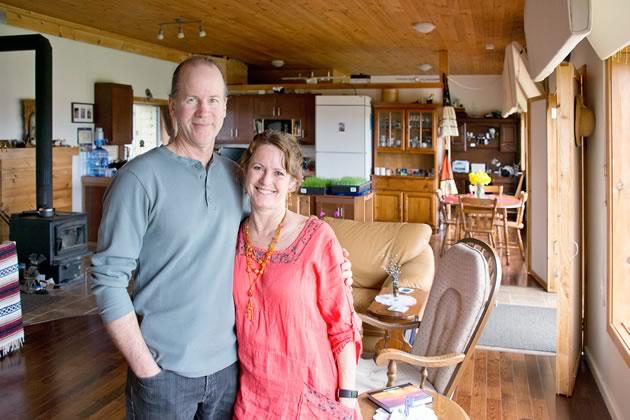
The Krugers own most of the appliances found in a conventional home though all are the most energy efficient available and some they only use on sunny days. Brad designed the insulated window coverings that preserve the heat in winter and keep the house cool in summer. Photo by Pete Paterson.
Sun and wind supply nearly all the electricity needed to power the home’s LED lights and energy-efficient appliances. Most of the power comes from a small solar array in the yard that can be pivoted manually to face the sun. The solar panels alone cost $2,000, and the battery and associated electrical paraphernalia pushed the total to five grand.
Wind is a secondary source of electricity. With typical Kruger can-do attitude, Brad and Mary installed two small wind generators themselves. A 12-volt lead-acid battery stores the electricity generated by the solar and wind units. “The battery is like the third person in our relationship,” says Brad. “We really baby it.”
Indeed, the Krugers’ lives revolve around the battery’s charge. On cloudy, still days when the battery isn’t fully charged, the Krugers adjust. Their “sunny day” (i.e., non-essential) appliances aren’t turned on. “The sunny-day kettle isn’t used and we sweep instead of vacuum,” says Mary. On the day I dropped by, the couple were excited about their new crockpot. It too will be a “sunny day” appliance.
When the sun does shine, it energizes both the battery and the Krugers. “Once our battery is full and we still have sun, it’s all free at that point and we go crazy with it,” says Brad. “We crank the stereo full blast, we microwave, we vacuum and we charge whatever needs charging. I’ve been known to rush home when the sun comes out if there’s stuff I want to get done.”
The Krugers own most of the appliances found in a typical home. The only major appliances they do without are a dishwasher and a clothes dryer. Washing dishes by hand is hardly privation, and laundry dries quickly outdoors, or indoors on rainy or cold days.
The appliances they do own are all energy efficient. Their 12-volt refrigerator uses only a fraction of the power of a standard refrigerator. Their microwave is the most energy efficient on the market. They watch a 32-inch TV instead of a huge screen and use laptop instead of desktop computers.
Their household use of fossil fuels, beyond a small amount of gasoline for the generator, is limited to propane for their stove. At their current rates of use, the propane, stored in a 500- gallon tank, should last about 14 years.
Energy efficiency has a behavioural component as well. In winter the Krugers precool food and drink purchases in a breezeway before refrigerating them. Their freezer sits in “the tower,” an unheated structure next to the house, where the freezer doesn’t need to work as hard to keep things cool.
The four-level tower satisfies several important needs. The ground floor houses the freezer and battery. In good weather, the second floor serves as an airy, sun-filled studio for Mary’s reflexology practice. The upper deck supports the wind turbines and serves as the perfect perch for sipping a glass of Chardonnay while watching wildlife.
An insulated root cellar below the ground floor is where they store beets, potatoes, carrots and other veggies from their garden, as well as their preserves, including applesauce and chokecherry jelly harvested from wild trees on the property.
Off-grid also means off the municipal water supply. A conventional well supplies some of the Krugers’ needs, but they also channel rainwater from their metal roof through a filter system and into a 1,000-gallon tank. Every inch of rain that falls on the roof produces 1,700 gallons of water, so less than an inch of rain fills the cistern. During last summer’s drought the well went dry, but even the minimal rain that fell was enough to satisfy the Krugers’ needs through the summer and fall.
Like other rural homes, the house has a pressure tank from which they pump water to the roof to provide flow for their sink and shower. The tank’s 120-gallon capacity and their miserly daily water use – only about 10 gallons – ensure they don’t have to tap into it very often.
Throughout construction, the house was subject to all the building inspections required by Dufferin County. Brad has high praise for the county inspectors. “They treated me like their disadvantaged cousin, took me under their wing, made sure I did everything right. They could see I was trying really hard,” he says. Still, he worried about whether the county would grant the final occupancy permit.
As the house neared completion last year, Pedro Cruz, a county building inspector, paid a visit. Well acquainted with building codes by then, Brad knew that Cruz was likely to have problems with several things. Resigned to his fate, Brad listed them and Cruz confirmed his fears, responding, “Yes, it’s going to fail.”
Still, Cruz was impressed by Brad’s innovations and described them to Mike Giles, the county’s chief building official.
Giles responded with predictable skepticism and decided he had to see the house for himself. He arrived the next day with a team of inspectors. Brad quaked. “I was pretty scared at that point,” he says. “I thought, ‘I’m in big trouble.’”
With decades of experience, Giles had never seen a house like the Krugers’. He talked to Brad and Mary at length and asked Brad for documentation explaining some of the materials and technologies. Giles had few guidelines on how to assess such an unusual house. He left. The Krugers waited and worried.
A week later Giles returned – carrying a certificate of approval. Brad and Mary’s dream had been legitimized.
Brad had thought one of the potential stumbling blocks to approval would be the absence of a flush toilet. “We thought we’d have a huge uphill battle trying to explain our toilet to the building inspectors, but we were pleasantly surprised.”
The Krugers originally bought a composting toilet, but when it failed to perform as well as they had hoped, or as well as advertised, it inspired Brad’s next design project. The resulting privy, a composting toilet that Mary has playfully dubbed “Brad’s Pit,” may be the crowning glory of his ingenuity.
Brad’s design keeps urine and solid matter separate. Solid matter is swept into a ventilated wall with a built-in heat exchanger, which keeps the waste from freezing in the winter. A fan, working steadily, directs air and odours upward and out a vent on the roof. By the time the process finishes and the waste is collected, the couple have perfect compost for their flower gardens.
For some of their friends and relatives, dedicated flushers, Brad’s Pit is too far beyond the pale, and they refuse to use it. Children, though, delight in the novelty, making a beeline for it when they come to visit.
Showering at the Krugers’ demonstrates the philosophy embedded in so much of the house: conservation, yes, but not at the expense of comfort. Brad’s shower melds water conservation with hedonistic indulgence. “Five gallons of water is all you have,” says Brad. “That focuses attention on getting wet and getting the job done.” The water is heated by the wood stove in winter and passively in the summer as it circulates through pipes on the roof. The hedonistic aspect is a “steamer” that Brad incorporated into the design. Once the insulated shower doors are closed, it’s like a sauna. “You get warm to the bone really fast,” he says.“A great way to chase the winter blues.”
But for all their common off-grid goals, Brad and Mary have had different motivations. For Mary, the committed environmentalist, it’s all about learning how to live with less. Appalled by the waste generated by a consumer society, she has long practised the three Rs: reduce, reuse, recycle. “We have to find a different path for our children, our grandchildren, for the planet,” she says. Water is precious to Mary. For her, the home’s various water conservation features are triumphant components of the overall design.
Brad concedes that his reasons for building the home were not as socially responsible. In Wealthy Barber fashion, he has long looked for ways to minimize his living costs. “For me, it has always been about money. Attempting to motivate people from an environmentalist angle, you’re likely to fail, but when you talk dollars and cents, everybody listens.”
Still, their views converge agreeably. Reducing consumption to save money also reduces environmental impact.
So what does Brad, a man driven by a frugal heart and an inventor’s mind, do next? He may consider selling a version of Brad’s Pit. And his passion to create may find traction in the tiny home movement, a growing phenomenon promoting the construction of livable homes ranging from a mere 100 to 400 square feet. Brad would like to build a tiny off-grid prototype. “I can take this house and shrink it to 300 square feet and make those 300 square feet spectacular, visually and living-wise.” Tiny homes with attitude for singles and couples.
More expansively, he casts his vision north to remote Indigenous communities where fuel and electricity costs are sky high, and ponders how his proven off-grid building techniques could help.
As for Mary, she’s glad to have a home that deeply satisfies her desire to live simply and with less. “A lot of people tell me this isn’t the real world,” she says. She looks at these people quizzically, living as they often do in oversized homes, burdened by big mortgages, big utility bills and costly demands – in time and money – for cleaning and maintenance.
To such doubters, Mary responds, “This is the real world.” The couple’s home enables her and Brad to live well with less and in sync with the rhythms of the sun and the seasons.
That $21 electricity expenditure? It was the cost of gasoline to run the generator that charged the Krugers’ household battery on the rare winter days when solar and wind power weren’t up to the task.
Related Stories
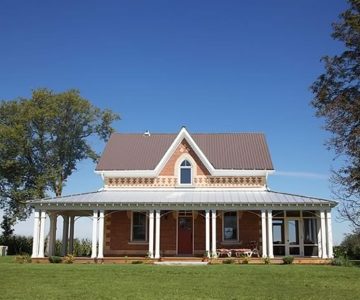
An Eco-revival for a Gothic Farmhouse
Mar 21, 2012 | | At Home in the HillsErica Hyland wanted a “green” renovation for her 1881 Caledon farmhouse. Architect Harry Morison Lay obliged.
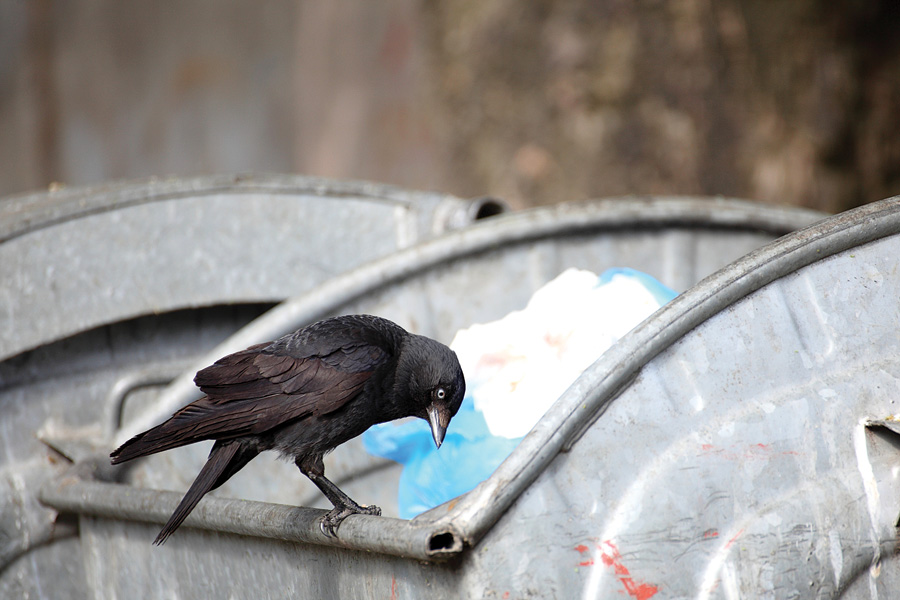
Dufferin Eco-Energy Park
Mar 23, 2012 | | EnvironmentWhile landfill raised concerns about what was seeping into our ground and water, gasification raises concerns about what is seeping into our air.
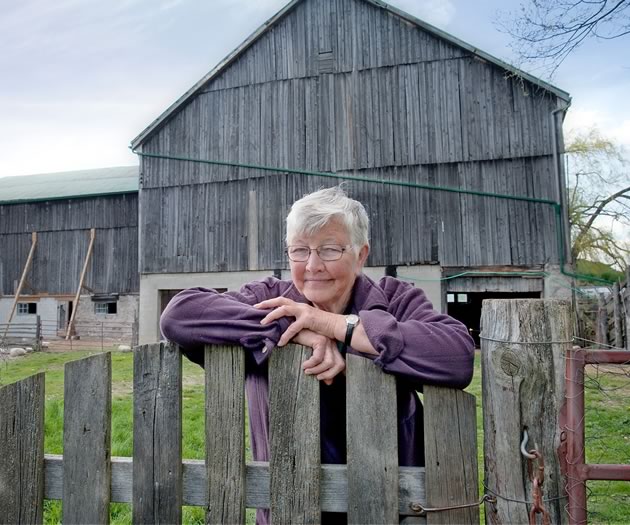
Many Parts Make a Whole Village
Jun 20, 2016 | | FarmingCaledon’s first ecovillage celebrates 10 years of sustainable living.
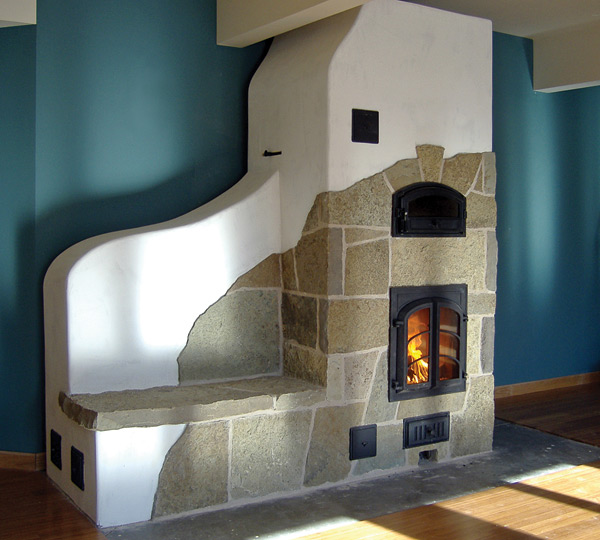
Soul of the Home
Sep 15, 2008 | | EnvironmentIn Finland, masonry heaters are known as “heart of the home,” and in Russia it’s “soul of the home,” reflecting the importance they have in people’s lives.
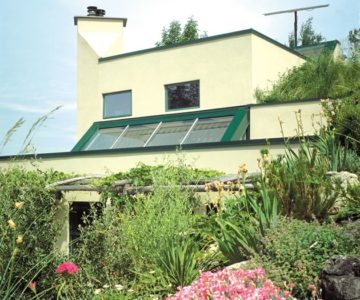
Sustainable Dwelling
Sep 21, 2001 | | EnvironmentA first-person account of building a solar-heated, earth-sheltered house.
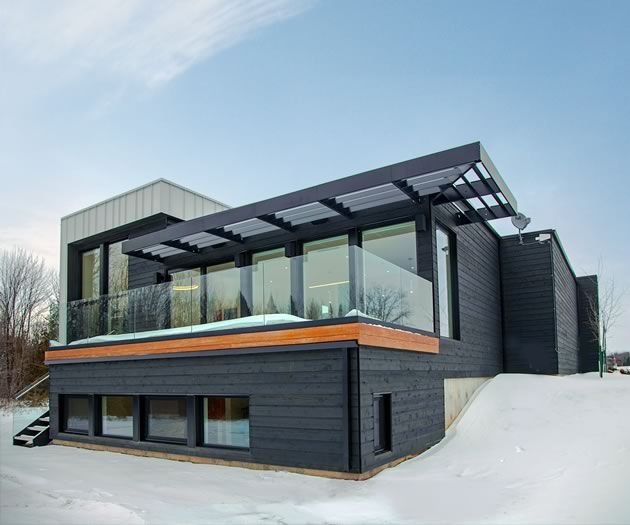
What’s Bred in the Bone
Nov 25, 2015 | | At Home in the HillsAn interlocking construction technique redefines the notion of prefab.



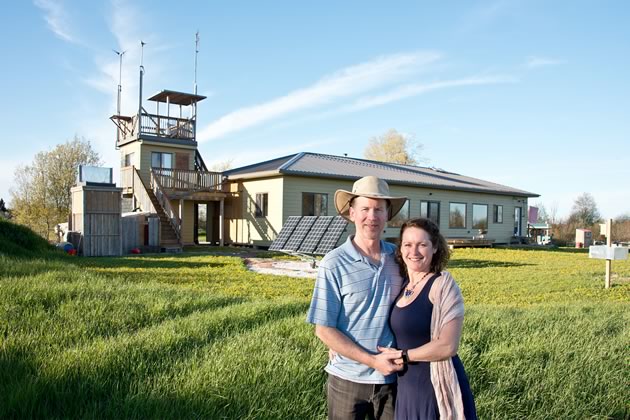
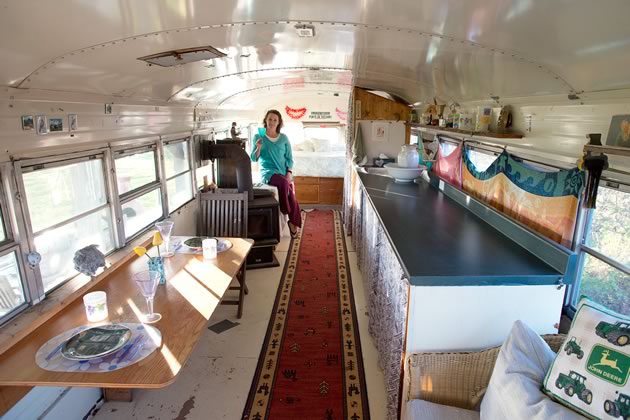
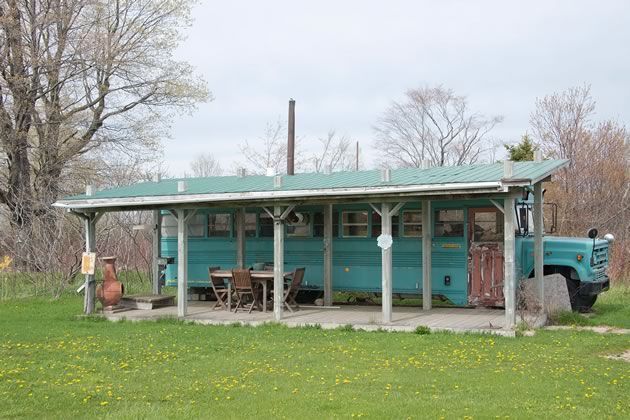
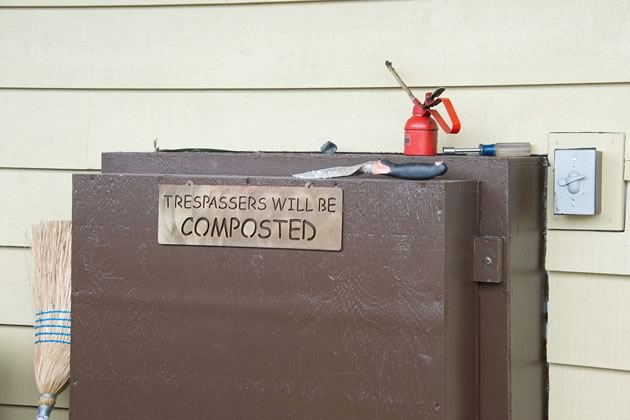





Love reading “In the Hills” – great articles!! We have a similar quarterly publication called “The Watershed” in Northumberland County – published for about 16 yrs. now.
Have a quick question for Don… need advice pls. Have Robin’s nest by my woodshed. .3 eggs I’ve been monitoring. 2 checked out of nest this a.m. & air borne today (keeping my cat in for 2 days – time out so birds will be safe ). Only the last little runt robin left now alone in nest. Will the mother feed it /come back to check on it?? Or is it on it’s own now – fly or die? Will I have to give it earthworms. That is a sad situation.
Pls. advise ASAP or I will check on google later this aft.
Sally Rohde – friend of Brian Naulls
Sally Rohde from RR #5 Cobourg Ontario on Jun 26, 2017 at 12:39 pm |